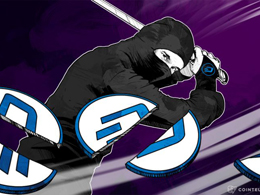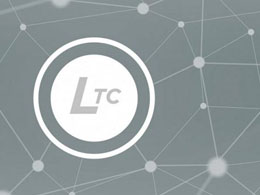
Dash adjusts block reward percentage to improve the economics of its network
This and other changes come as part of the protocol’s recent mainnet upgrade. Dash Core Group, the entity responsible for developing the privacy-focused coin DASH, publicized fresh changes to the asset's proof-of-stake network on Sept. 30. "Dash Core v0.16.0.1 binaries are released and ready for deployment on mainnet by node operators," said an announcement on Medium from Pasta, one of Dash Core Group's Developers. "This is a major release and is a mandatory upgrade for all miners and masternodes."The network update improves the DASH ecosystem in a number of ways, including methods for....
Related News
At the most recent Blockchain Atlanta gathering, attendees were treated to an in-depth presentation on Dash by founder and lead developer Evan Duffield, and myself — Amanda B. Johnson — host of DASH: Detailed. We covered why a foundation of governance and funding is crucial to pursuing the blockchain’s first app, “currency,” and how Dash plans to be first-to-market with layperson-friendly digital cash via a product called “Evolution,” coming in 2017. Explaining Dash in Atlanta. I lead the presentation with my own story of discovering Bitcoin, studying cryptocurrencies, and eventually....
Dash has implemented their “masternode” system, which involves dividing the block reward into three parts: 45 % goes to the miners, 45 % goes to masternodes, and 10 % is being set aside for Dash project funding. Developers Evan Duffield and Daniel Diaz write that the masternode system is “an incentivized two-tier model, rather than the existing single-tier model in other cryptocurrencies such as Bitcoin.” Their goal is to avoid a reduction in the number of full nodes, the likes of which has been seen in Bitcoin over the past year. Nodes are especially important to the maintenance of the....
Bitcoin and many other cryptocurrencies functioning off Blockchain distributed ledger technology operate in an open-source environment without centralized ownership or command structure. Under this model, only miners, those who mint new coins and process network transactions, receive funding directly from the cryptocurrency itself in the form of the block reward, or all new coins created. Dash, a cryptocurrency emphasizing mass adoption and usability, breaks from this model by offering only 45 percent of the block reward to miners and reserving 10 percent of new coins minted to fund....
Readers may be aware that Dash, formerly Darkcoin, has a system of what they refer to as "Masternodes," which are full nodes that receive part of the mining reward in return for confirming transactions far quicker than certain other cryptocurrencies. Unlike full nodes in Bitcoin, a Dash masternode requires a collateral investment of 1000 Dash, or over $2,000 USD at current rates. Recently, the Dash community raised the question as to whether this network of nodes could be utilized for other purposes. Specifically, whether or not it would be useful to utilize the network of full nodes to....
F2Pool, the same mining pool which generated the largest bitcoin transaction ever recorded on July 11, mined the Litecoin network's block 840,000, with a declined mining reward from 50 LTC per block to 25 per block for the first time since its launch in 2011. The Litecoin network, similar to the Bitcoin network systemized to halve its block reward every 840,000. To celebrate its technological "milestone," the Litecoin association published a video explicating the process of the decline in mining reward. Currently, the halving of the mining reward has not affected the network significantly.....





